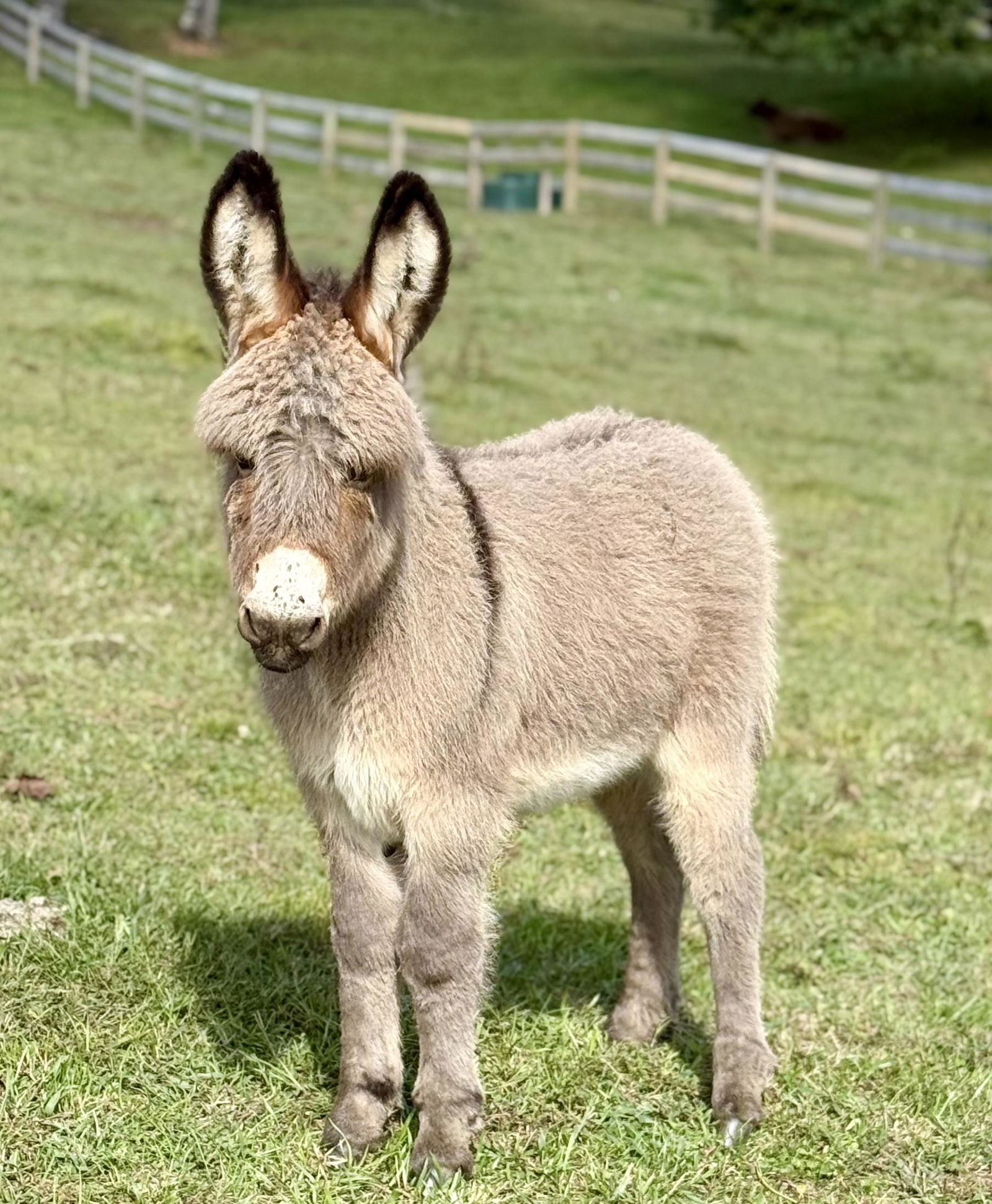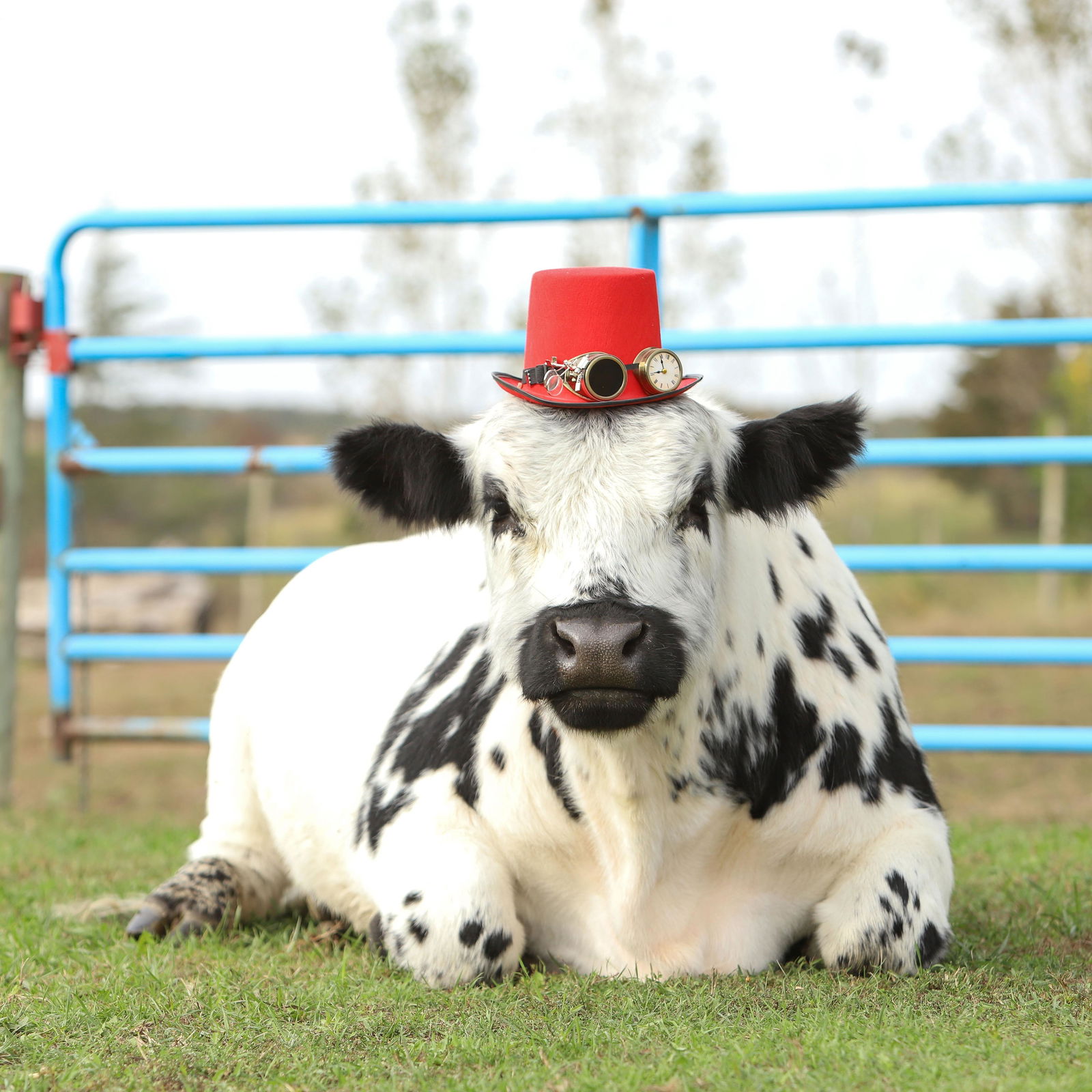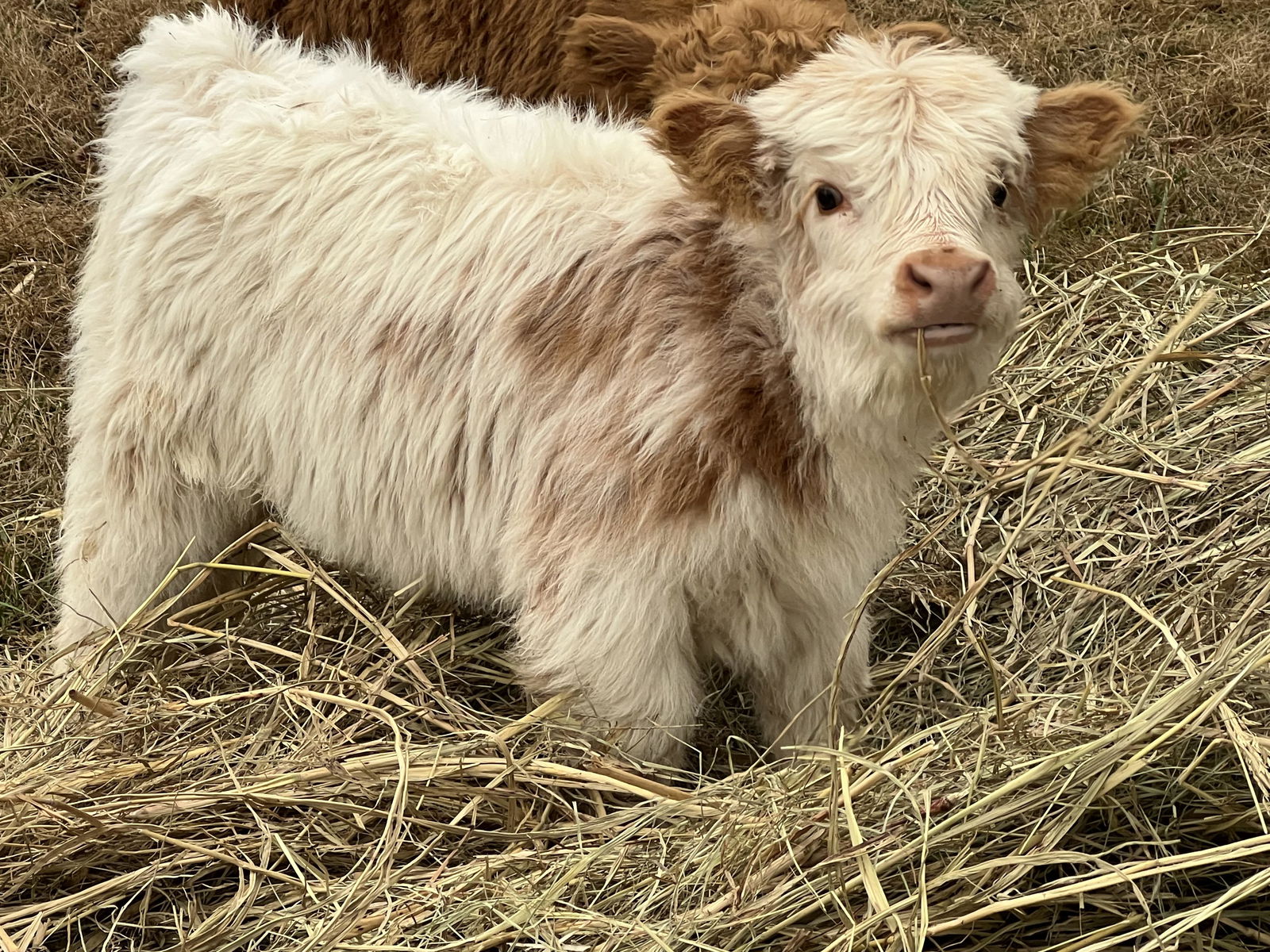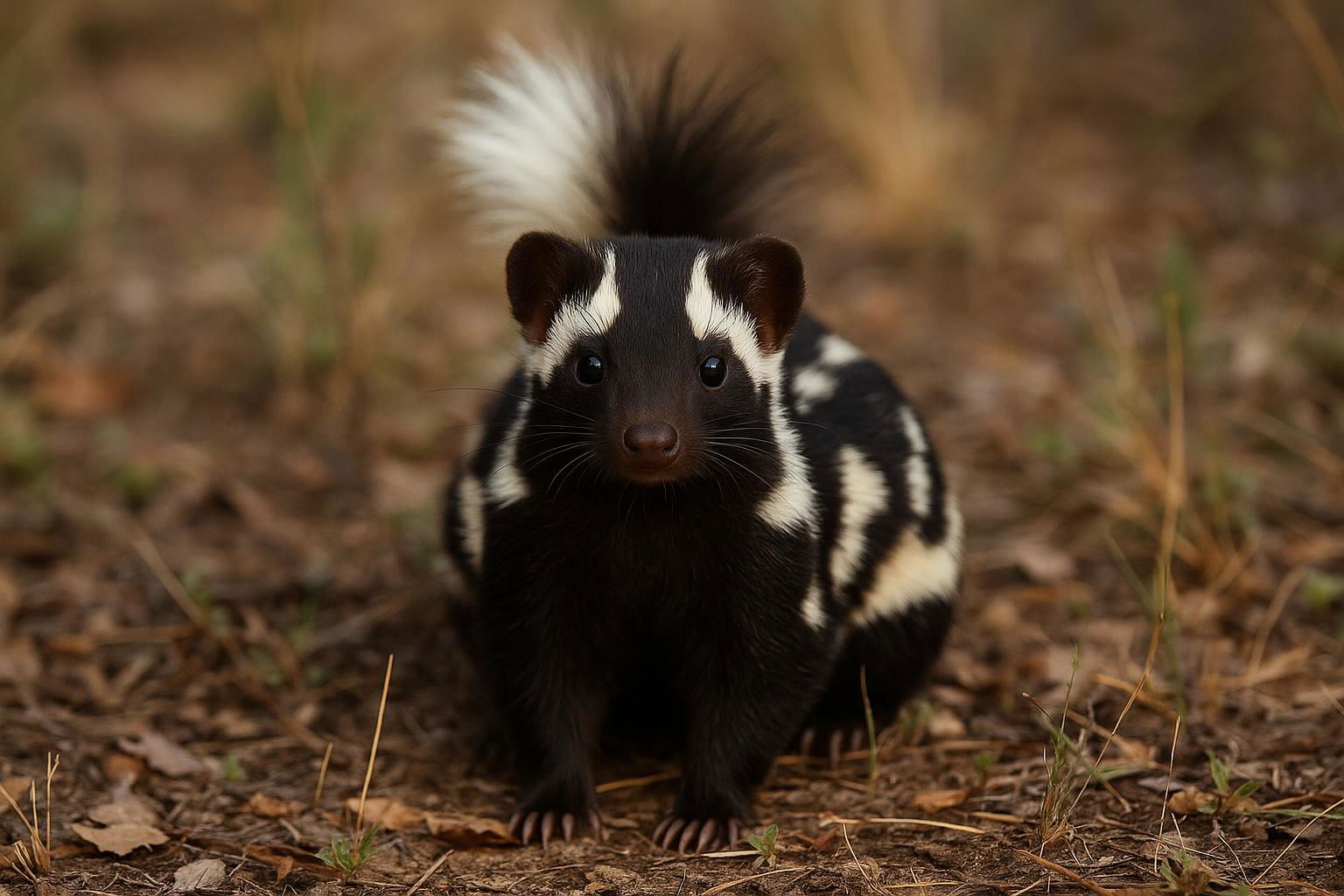
Eastern Spotted Skunk
Spilogale putorius
The Eastern Spotted Skunk (Spilogale putorius) is a small, elusive mammal native to North America. Characterized by its striking black and white fur, this species features a unique pattern of spots and broken stripes that distinguish it from other skunks. Measuring between 35 and 45 centimeters in length, and weighing from 0.5 to 1 kilogram, the Eastern Spotted Skunk is smaller and more agile than its common relatives. It possesses a slender body and short legs, perfectly adapted for quick bursts of speed and climbing trees.
Primarily nocturnal, the Eastern Spotted Skunk is omnivorous, feeding on a varied diet that includes insects, small mammals, birds, eggs, fruits, and even carrion. Its keen sense of smell helps it locate food, while its sharp claws are effective for digging and foraging.
Renowned for its acrobatic behavior, it is known to perform a distinctive 'handstand' as a warning when threatened, positioning itself to effectively deploy its defensive spray. Habitat preferences for this species include wooded areas, grasslands, and farmland, where ample cover allows them to construct dens in hollow logs, brush piles, or abandoned burrows. While once common, the Eastern Spotted Skunk's population has declined in some areas, with habitat loss and fragmentation posing significant threats. Conservation efforts focus on habitat preservation and further research to better understand and protect this fascinating and unique skunk species.

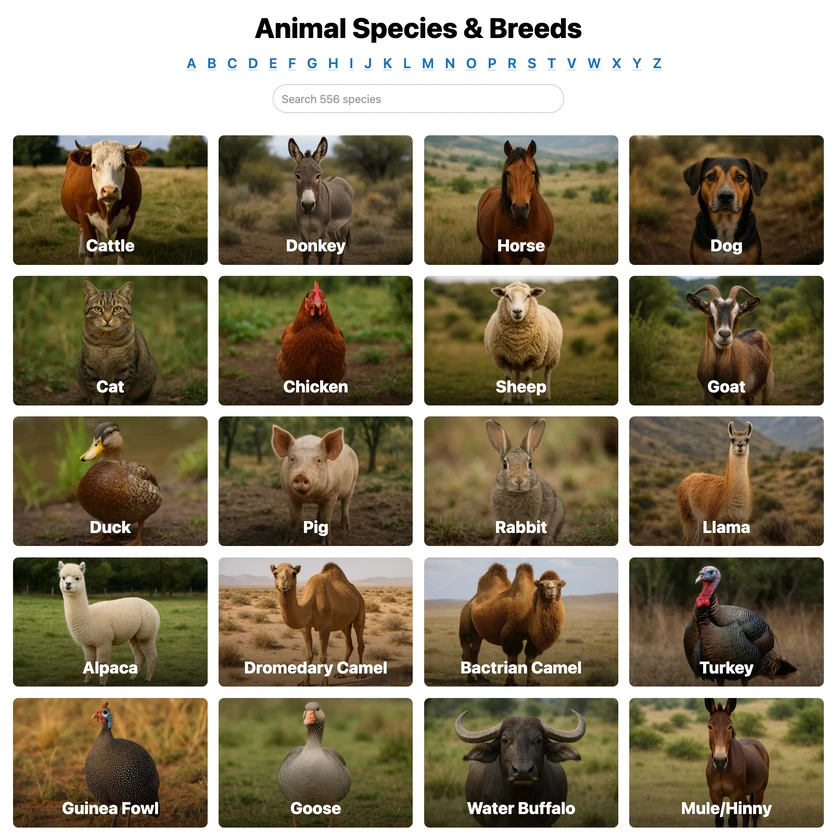 All Species & Breeds
All Species & Breeds
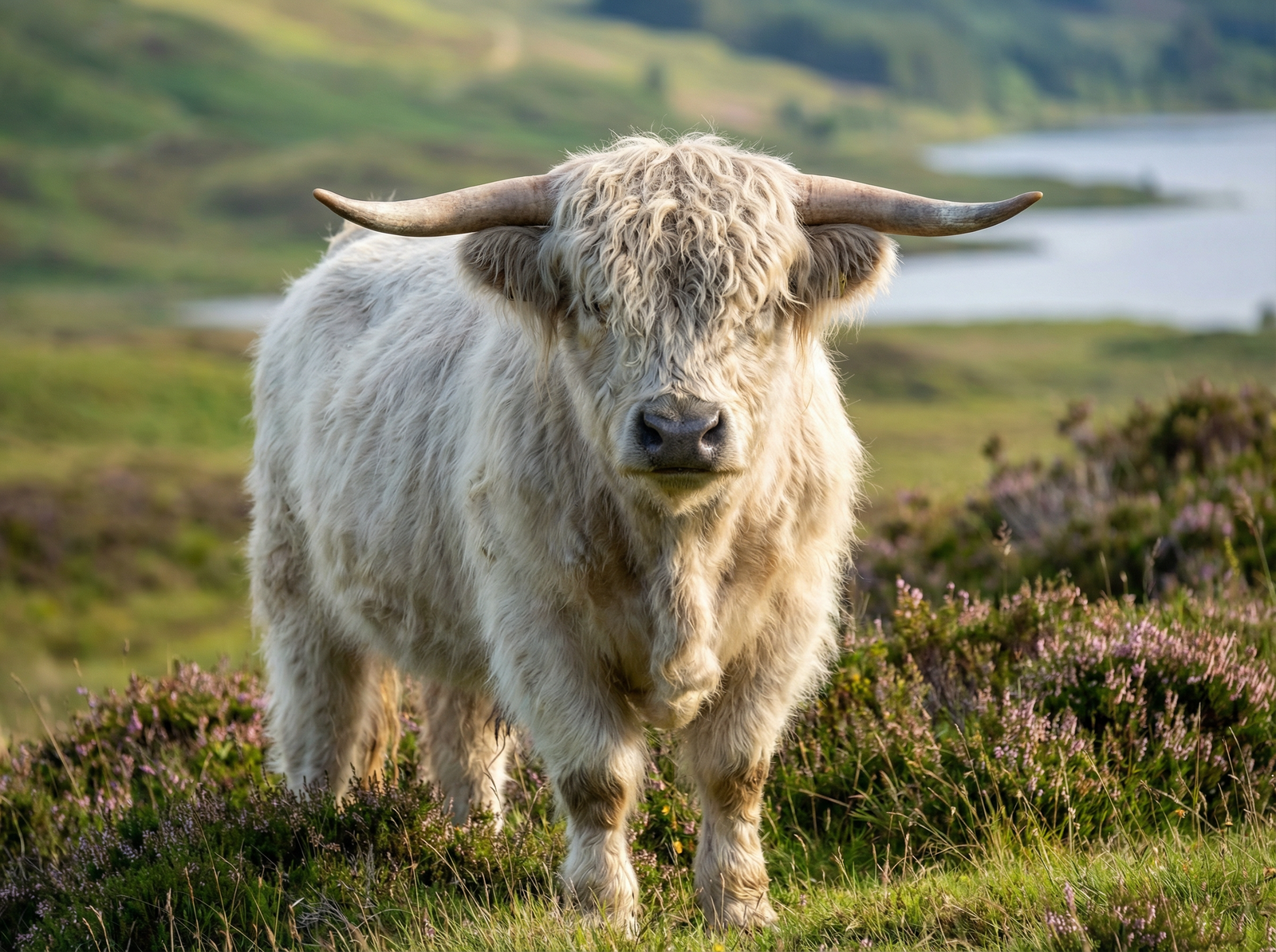 Highland Cattle
Highland Cattle
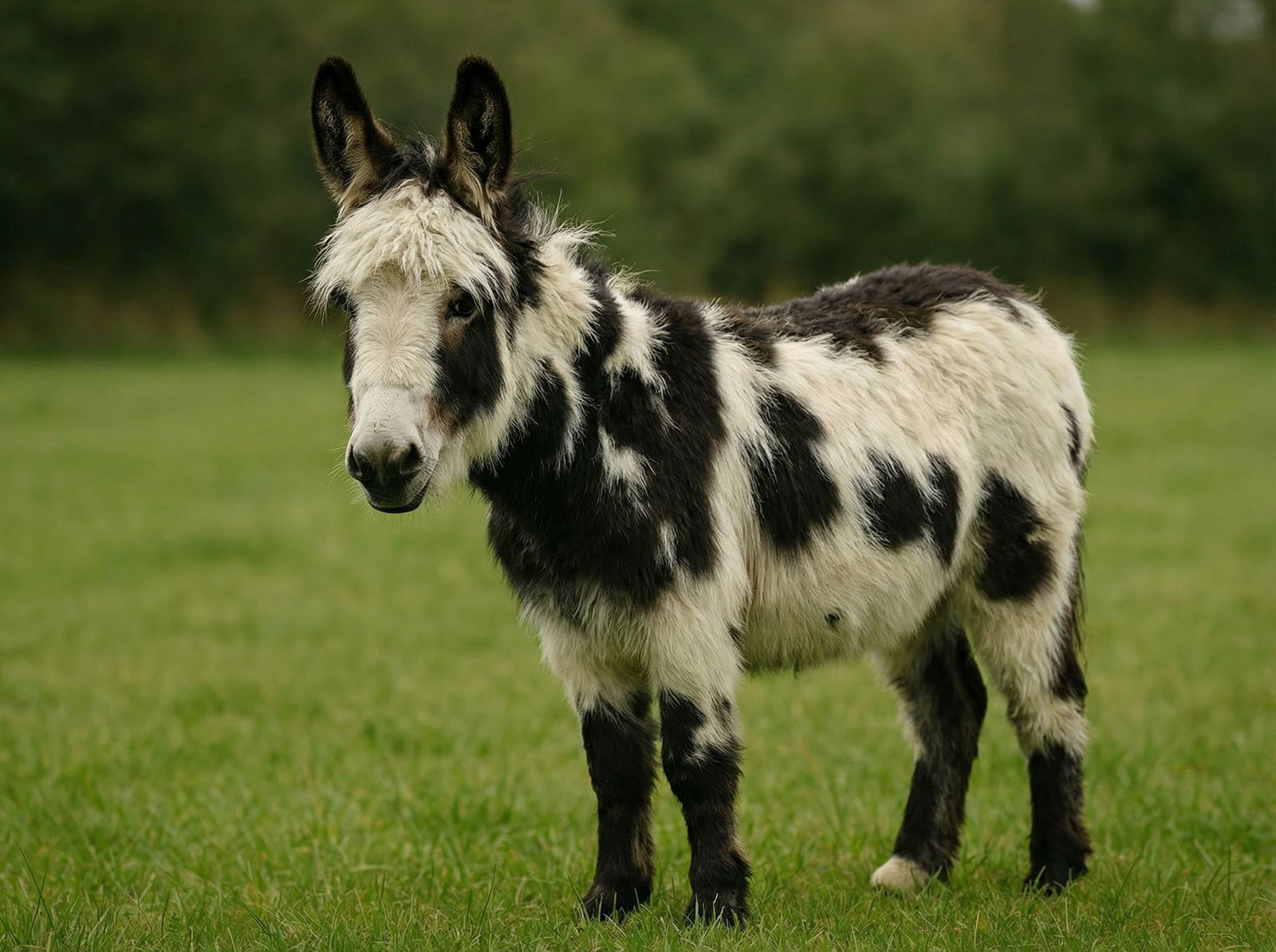 Miniature Donkeys
Miniature Donkeys
 All Species Directory
All Species Directory
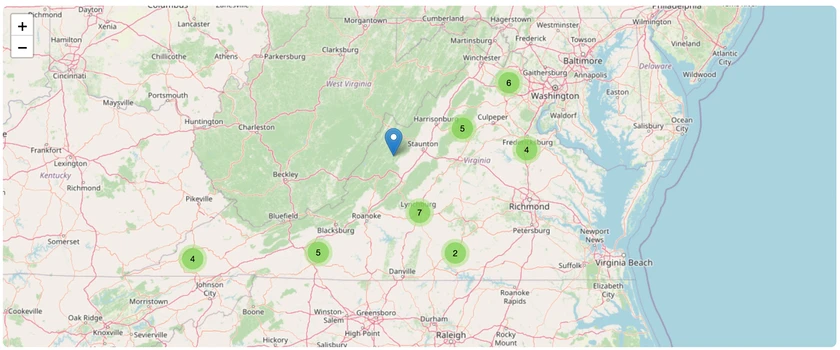 Highland Cattle in Virginia
Highland Cattle in Virginia
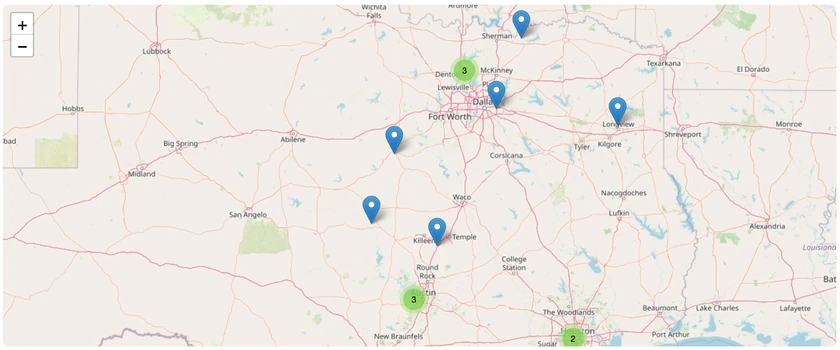 Miniature Donkeys in Texas
Miniature Donkeys in Texas
